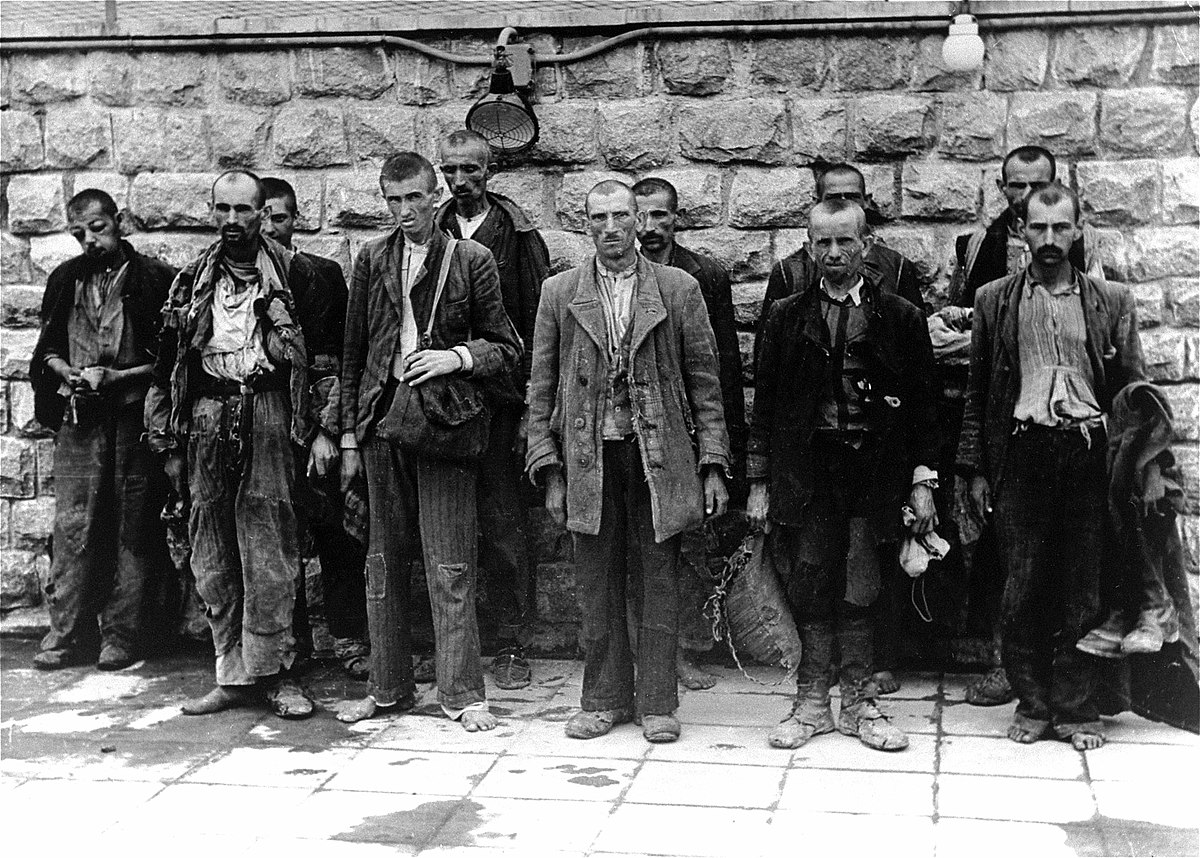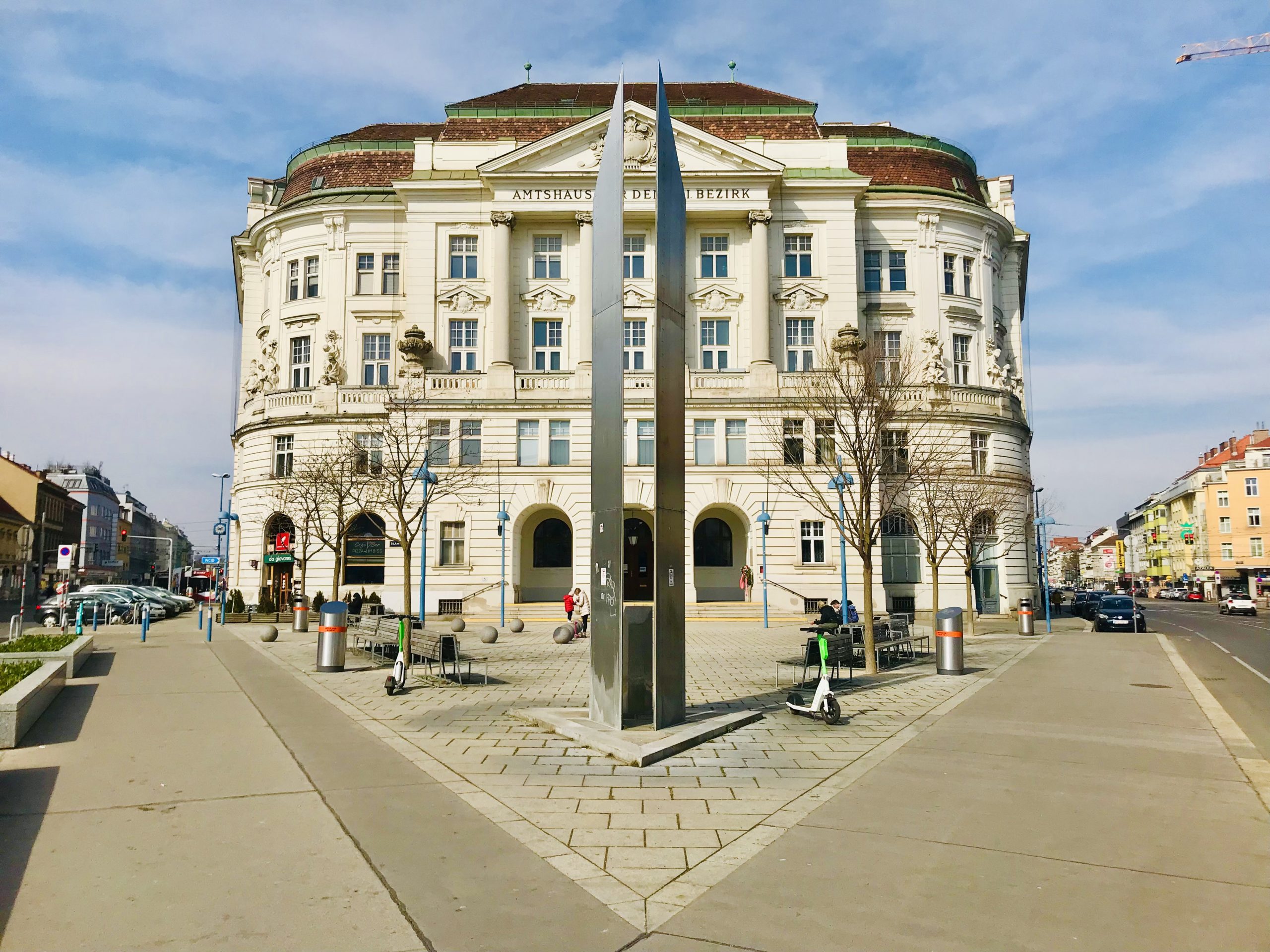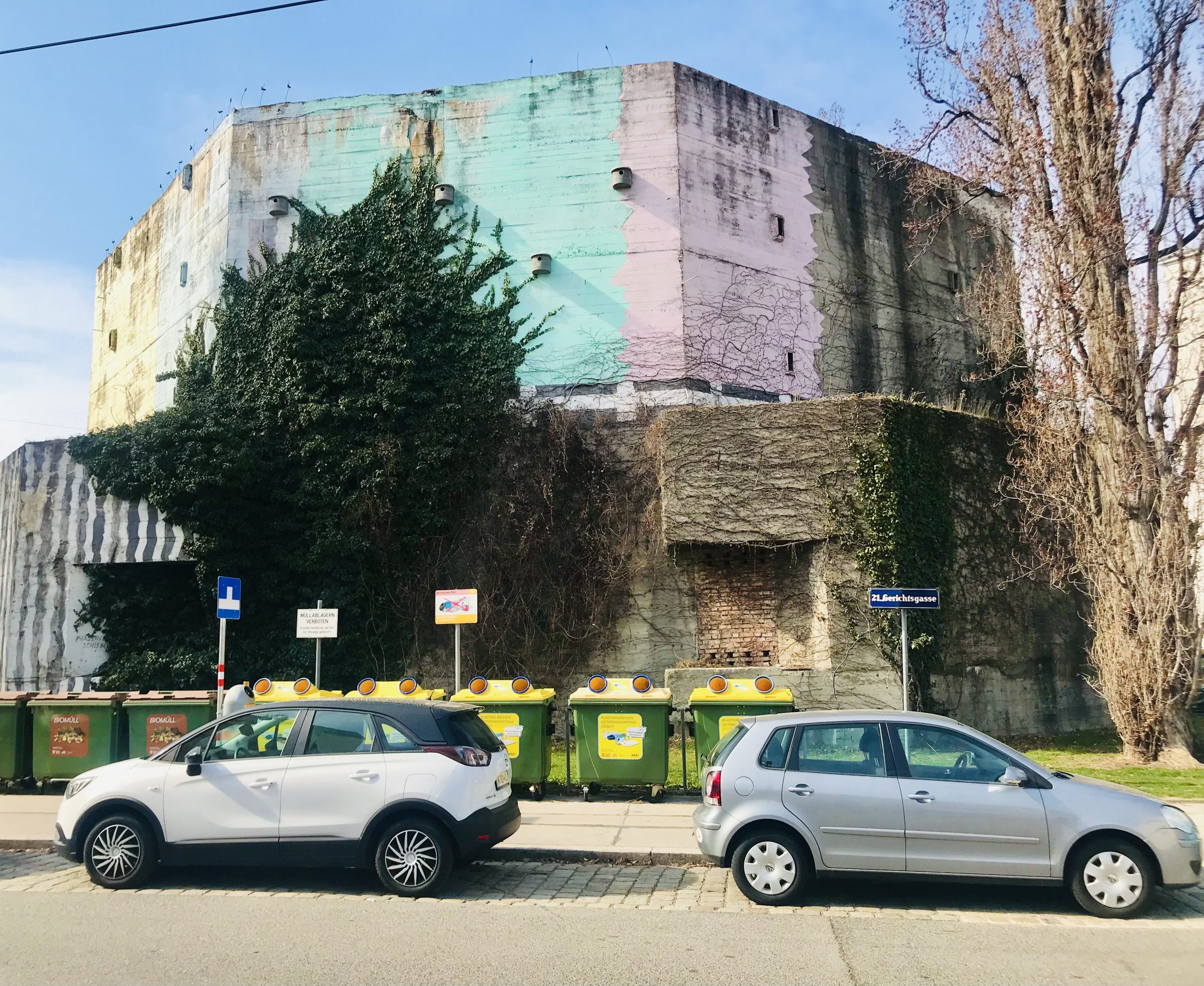
ENJOY THE BEAUTY AND HERITAGE OF THE NEUSIEDLERSEE – SEEWINKEL NATIONAL PARK, A UNESCO WORLD HERITAGE SITE
Table of Contents
Are you ready to explore Burgenland?!?! Wait a second, I need to find it on the map. Actually, Burgenland and its hidden gems are much closer than you realize. Only an hour east of Vienna is one of Burgenland’s gems, the Neusiedlersee – Seewinkel National Park, a UNESCO World Heritage Site. Completely off-the-beaten path, the Neusiedlersee or Lake Neusiedl is a wonderful area to explore on bicycles. The landscape is gorgeous. Now let’s cycle the Radweg Neusiedlersee!
CYCLING THE RADWEG NEUSIEDLERSEE
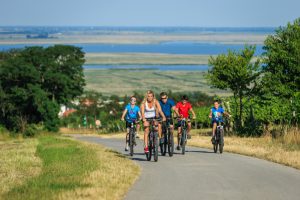 burgenland turismus
burgenland turismus
The 125 km (78 miles) long cycling trail known as the Radweg Neusiedlersee (or Cycling trail around Lake Neusiedl), is a flat path that weaves its way around the Lake through Austria and Hungary (it is a cross border Park). This peaceful trail also takes you to one of the hidden gems of Austria, the ancient town of Rust — one of the most charming villages in Central Europe. Rust is also known for its storks who return each year to nest on the ancient chimneys of the town. In addition to the wildlife, you will pass through scenic vineyards, pastures, and other charming towns and villages. So, if you are looking for a wonderful place to cycle with your family or friends, this is it. Let’s begin.
DIRECTIONS
Click the Green/Red icons below to open the START and END POINTS in Google Maps.
MÖRBISCH AM SEE
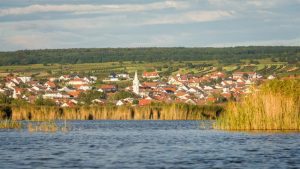 burgeneland turismus
burgeneland turismus
Our Start Point, Mörbisch am See, is a tiny village on the western banks of Lake Neusiedl near the Austria – Hungary border. We will begin this bicycle ride from the Pension Sonnenhof – Bicycle Rental. There is ample parking and Pension Sonnenhof rents both bicycles and e-bikes. If you haven’t tried an e-bike yet, you really should. They are one of the coolest inventions since the iPhone. Departing Pension Sonnenhof, turn right on Nussau Road and ride east for 500 meters (1/3 miles) toward the water. The paved road will end. There will be a gravel cycle trail to your left. Turn left onto the trail and continue north towards Rust along the banks of Lake Neusiedl. The Lake will always be on your right. The distance from Mörbisch am See to Rust is 6 km (3.75 miles). This scenic cycle trail takes you along the water, past gently rolling hills with vineyards, and through several pastures.
THE CHARMING TOWN OF RUST
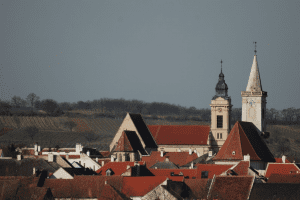 Johann G
Johann G
Our End Point, Rust, is a UNESCO World Heritage Site. First mentioned in 1317, Rust is one of the most charming towns in Austria. Rust is also known as the “Free City of Rust.” In 1524, the Hungarian Emperor granted the affluent citizens of Rust the privilege to mark the corks of their wine barrels with the letter “R,” a designation that still appears on wine corks today. In 1921, Rust (or Ruszt in Hungarian) and the Burgenland region passed from Hungary to the Republic of Austria. The key attractions are the unbelievably charming medieval town square and baroque-renaissance architecture, its reed shoreline and hidden boat sheds, and the storks.
THE MAJESTIC STORKS
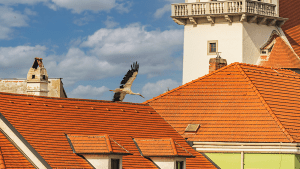 Johann G
Johann G
Every year like clockwork, the majestic white storks arrive to build their nests and breed on the ancient chimneys of Rust. Take a peaceful stroll around the magical Old Town, Burgenland’s architectural jewel. Rust has also been prized as a film location and appears prominently in the Austrian televisions series “Der Winzerkönig” about a family of wine producers. In fact, try the local wine. Rust has some of the best heurigen or wine taverns, in the region. For guided tours of the city and Night Watchman tours, inquire at the Tourist Information Center located in the Rathaus or Town Hall. Quaint, rustic, and refined — Rust really is one of the most charming places in Austria and is only known to locals.
FUN FACT: Watch the storks in action 24/7 with the STORK CAM (CLICK HERE)

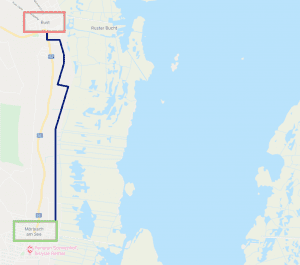 Google Maps 2021
Google Maps 2021
OUR EXPERIENCE
If you are looking for an easy cycle trail on a mostly flat paved surface with loads of gorgeous scenery rolling past you, then cycling the Radweg Neusiedlersee is for you. This trail is best suited for couples, families, and friends who want to spend a nice day out and get some fresh air and exercise. Our family spent a public holiday here. We unloaded our bicycles in Mörbisch am See at the Pension Sonnenhof. We packed a lunch and some drinks. The trail is an easy three blocks from the Pension.
We spent the day slowly making our way north to Rust stopping along the way to enjoy the scenery. We stopped to pet the sheep, grabbed a snack in the vineyards, and took in the spectacular views. The village of Rust is incredibly quaint and well worth walking around. We stopped in several wine shops and poked around the cobblestone streets and alleys of the town.
The storks and their massive nests on the town’s chimneys are incredibly unique. There are lots of cute cafes and restaurants in this historic town. In fact, Rust is one of our favorite towns in Austria and is among the most charming we have visited. Overall, this was a relaxing day out and cycling the Radweg Neusiedlersee through the charming town of Rust is highly recommended.
PRO TIPS FOR CYCLING THE RADWEG NEUSIEDLERSEE
PRO TIP 1. Remember to bring water and snacks. There are several points along the way where you can and should stop to have to refresh yourself and enjoy the views.
PRO TIP 2. This is not a strenuous cycle trail. It is a flat bike path and best suited for families, couples and friends who are not in a rush and want to enjoy each other’s company while taking in gorgeous scenery.
PRO TIP 3. Remember to bring bicycle locks. Although Rust is safe, you will want to walk around and explore without your bicycle and likely grab a bite to eat.
PRO TIP 4. Bring a small backpack and some cash. This is a great region for locally grown fruits and vegetables as well as honey, jams and locally produced wine.
RELATED ACTIVITIES
If you enjoyed cycling past the gorgeous scenery of the Radweg Neusiedlersee, then you should definitely consider these activities:
TRAVEL GUIDE | CARNUNTUM PETRONELL ROMAN ARCHAEOLOGICAL PARK. Explore the Carnuntem Petronell Roman Archaeological Park, where a major Gladiator Dchool and Roman city on the Danube are brought back to life.
SCENIC DRIVE IN LOWER AUSTRIA. Rolling hills, blissful meadows, and majestic mountain views make this gorgeous scenic drive through the Mostviertal region in Lower Austria a must.
WILDKOGEL RODELBAHN. Race with your family and friends down the world’s longest illuminated toboggan run at the WildKogel Rodelbahn in Neukirhen-Bramberg.
NEAR THIS PLACE
In addition to Rust, there are a number of other points of interest when cycling along the 125 km Radweg Neusiedlersee:
TABOR RUINS. In the 13th century, Tabor served as a lookout point over the Pannonian Plain. Today, the Tabor Ruins provide an amazing backdrop to the setting sun over Lake Neusiedl. ADDRESS: Ruine Tabor, Untere Hauptstraße 7, 7100 Neusiedlersee, Austria.
KIRSCHEN GENUSSQUELLE CHERRY ORCHARDS. The village of Brietenbrunn is surrounded by traditional wine cellar lanes and cherry orchards. On the slopes of the Leitha Mountains along Lake Neusiedl, farmers have cultivated cherries since the 18th century. Today, the Strohmayer family operates Kirschen Genussquelle, one of the leading Austrian producers of cherry-related products. When Prince Charles and Camilla visited Austria, the Royals requested cherry products from the Strohmayers. Take a Guided Tour of their orchard or enjoy some home made cherry strudel. ADDRESS: Prangerstrasse 49, 7091 Breitenbrunn, Austria.
PURBACH WINE CELLAR LANE. In 1850, the winegrowers of the region built their wine cellars at the foot of the Leitha Mountains. Today, 50 historic stone cellars form the scenic Purbach Wine Cellar Lane or kellergasse. After a leisurely stroll or bike ride, enjoy tasting local wines at the Leithaberg Vinoteque overlooking the wine cellars. The Vinotheque has more than 350 local wines and regional products to choose from. Check this out! The wine is served using an automatic vending system. Choose your wines, insert your pre-paid Leithaberg Card, and your beverage is poured. ADDRESS: Historische Kellergasse, Am Kellerplatz 1, 7083 Purbach am Neusiedlersee, Austria.
ESTERHAZY PALACE. Esterhazy Palace is located in the historical town of Eisenstadt which was first documented in 1373. Eisenstadt rose to prominence in 1648 when it became the residence of the powerful Esterhazy family. Additionally, Classical composer Josef Haydn lived in Eisenstadt for 31 years and served as the court musician. Today, Esterhazy Palace houses the tourist office. The rest of this majestic palace, including the frescoed hall where Haydn conducted his orchestra, can be visited by guided tour. ADDRESS: Esterhazyplatz 5, 7000 Eisenstadt, Austria.
HAYDN HOUSE. Classical composer Josef Haydn’s residence, Haydn Haus, is a small museum. Haydn’s tomb can be seen in the Bergkirche, a small Baroque church. A Haydn festival takes place each September, with performances in both the palace and the church. ADDRESS: Haydn-House Eisenstadt, Joseph Haydn-Gasse 19 & 21, A-7000 Eisenstadt, Austria.
FORCHENSTEIN CASTLE. Just 12 miles southwest of Eisenstadt is another Esterhazy family property, Forchtenstein Castle, a 14th-century fortress with a tower and onion dome housing family memorabilia and an armor collection; EUR 12.00/USD 13.00 for a guided tour. ADDRESS: Burg Forchtenstein, 7212 Forchtenstein, Austria.
BEST PLACES TO STAY
RELAIS & CHATEAUX TAUBENKOBEL. 5 Star accommodation, a gourmet restaurant, and garden with a swimming pond accompany modern rooms decorated with original artwork. Air conditioning, iPod docking station, fine fabrics by Etro, and a bathroom with design elements by Vola, and beauty products by Malin & Götz. ADDRESS: Hauptstraße 27-33, 7081 Schützen am Gebirge, Austria.
![]()




